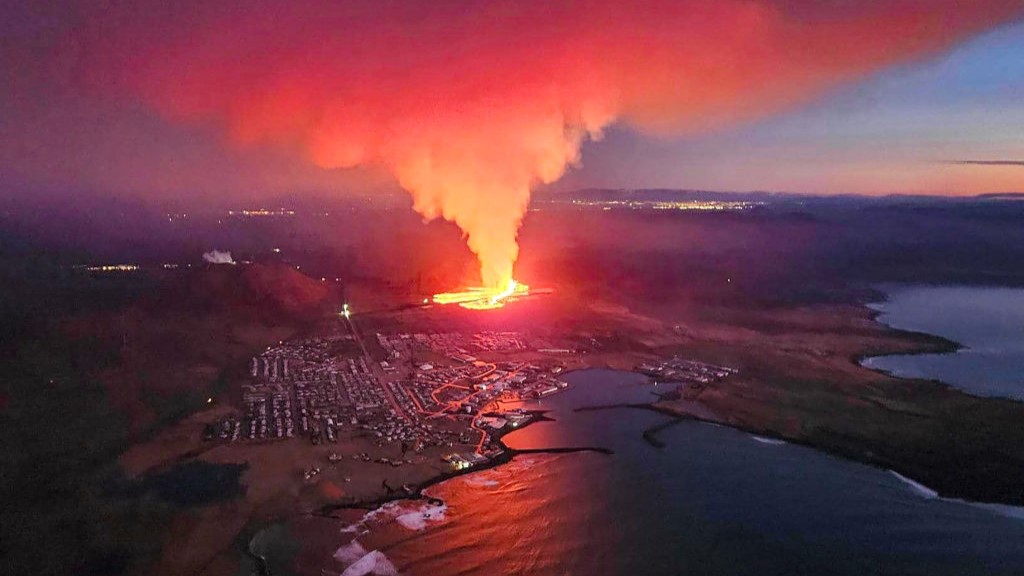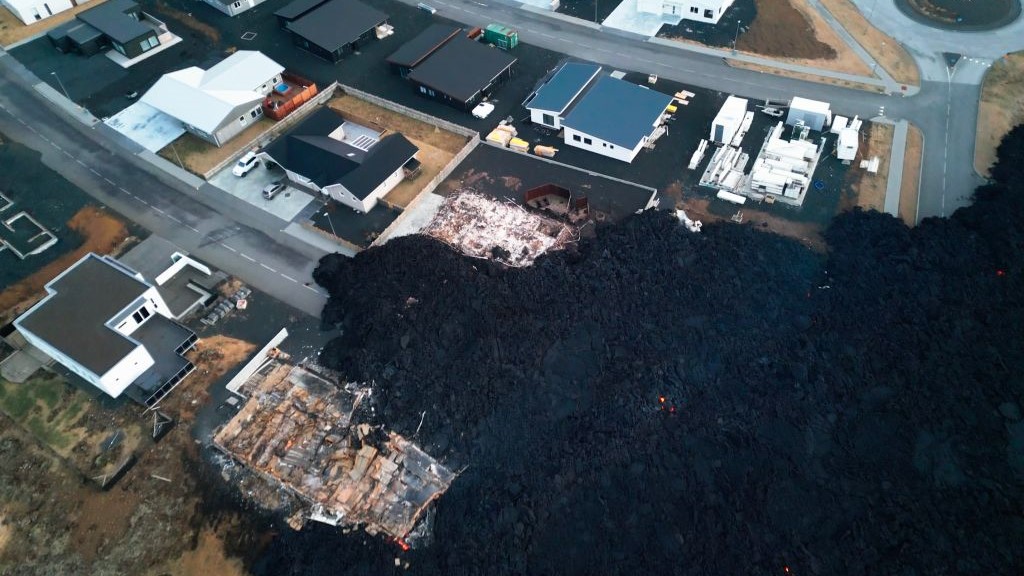'It is not very wise to spend the night in Grindavík': Iceland volcano gears up for another eruption
Magma accumulating beneath Svartsengi has reached levels recorded on the eve of previous volcanic eruptions and could burst out imminently, according to the Icelandic Met Office.

Another volcanic eruption on Iceland's Reykjanes Peninsula is imminent, with experts predicting another fissure to open in the coming days — potentially within the town of Grindavík.
Magma is once again accumulating beneath Svartsengi at a rate that could trigger a new eruption in the coming days, according to the Icelandic Met Office (IMO).
As of Monday (Feb. 26), an estimated 268 million cubic feet (7.6 million cubic meters) of molten rock sat beneath the ground 2.5 miles (4 kilometers) north of the town of Grindavík. This amount of magma is nearing levels that fueled eruptions from the same volcano in December 2023, on Jan. 14 and again on Feb. 8.
"If you look at the eve of previous volcanic eruptions … the probability of an eruption increases when the volume has reached 8 [to] 13 million cubic meters [283 to 459 million cubic feet]," IMO representatives wrote in a translated statement. "If magma accumulation continues in the same way, the lower limit will be reached tomorrow."
If an eruption occurs, the warning signs are likely to be very short, IMO representatives cautioned.
"Signs that magma is making its way to the surface would appear in sudden, localized and intense micro-seismic activity," they wrote in the statement. "A new eruption could start with very little notice, less than 30 minutes."
Get the world’s most fascinating discoveries delivered straight to your inbox.
Representatives outlined several possible scenarios for the predicted eruption. The most likely scenario is that magma will burst out in the area between Stóra-Skógfell and Hagafell, between 3.7 and 1.2 miles (5.9 and 2 km) northeast of Grindavík, according to the statement. In this scenario, lava could reach the town in less than 4 hours.
"We are really worried that if there is an eruption in the next few days, it will be difficult to evacuate these places," Hjördís Guðmundsdóttir, the communications director of the Icelandic Civil Defense, told the Icelandic news website mbl.is. "We know that people are in the town and in the Blue Lagoon [in Svartsengi], but we have warning whistles in place that will be blown if there is a reason for it."
An eruption could also occur near Sýlingarfell, 3 miles (4.8 km) northeast of Grindavík. Under this scenario, lava could reach the town in less than an hour.
An eruption could also take place within the town itself, representatives said. In this case, authorities would likely have between 1 and 5 hours from the first earthquakes being recorded and an eruption taking place.
"There is a very high probability that there will be an eruption next week," Kristín Jónsdóttir, a natural hazards specialist with the IMO, told the Icelandic website Vísir. "The area around Grindavík, there is a considerable risk there."
Jónsdóttir said an eruption could occur anywhere along the magma corridor, and that the warnings of eruptions are "getting shorter and shorter," in some cases just 30 minutes.
"If the seismic activity goes to the south towards Grindavík, it will take a little longer, so there will be some warning about it," Jónsdóttir said. "But we're talking about maybe half an hour, an hour which is very short notice," The meteorological office assesses that there is considerable danger, and I would say that it is not very wise to spend the night in Grindavík."

Sascha is a U.K.-based staff writer at Live Science. She holds a bachelor’s degree in biology from the University of Southampton in England and a master’s degree in science communication from Imperial College London. Her work has appeared in The Guardian and the health website Zoe. Besides writing, she enjoys playing tennis, bread-making and browsing second-hand shops for hidden gems.



